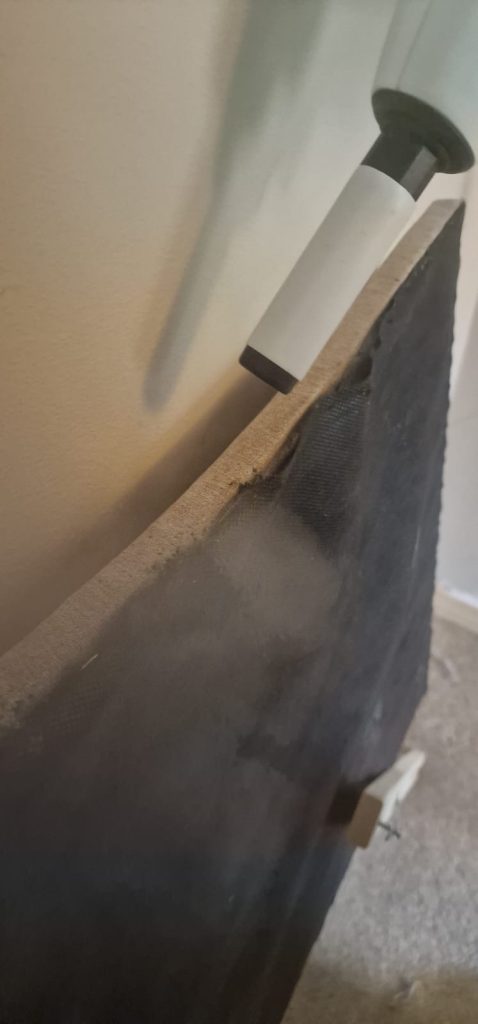Bed Bug Infestations: Signs, Prevention, and Treatment Options
Bed bugs are a common household pest that can cause significant discomfort and distress. Their ability to hide in small cracks and crevices, coupled with their rapid reproduction rate, makes them one of the most difficult pests to control. If you suspect a bed bug infestation, prompt action is necessary to prevent it from worsening. In this article, we’ll cover the signs of bed bugs, prevention strategies, and bed bug treatment options to help you manage an infestation effectively.
What Are Bed Bugs?
Bed bugs are small, flat, reddish-brown insects that feed on the blood of humans and animals, typically while they sleep. These pests are often found in mattresses, bed frames, and furniture, and are most active at night. Although they are not known to spread disease, their bites can cause red, itchy welts and lead to sleepless nights.
Signs of Bed Bug Infestations
Bed bugs are skilled at hiding, which can make detecting an infestation difficult. However, there are several signs that indicate you may have bed bugs in your home:
1. Bite Marks
Bed bugs feed at night and typically bite exposed areas of skin, such as the arms, neck, and face. Their bites often appear in small clusters or lines and can cause itching and irritation.
2. Bloodstains on Bedding
After feeding, bed bugs can leave small bloodstains on your sheets or pillowcases. If you notice unexplained reddish stains on your bedding, it could be a sign of an infestation.
3. Faecal Spots
Bed bugs excrete dark, rusty-coloured droppings, which can be found on mattresses, bed frames, and walls. These spots are small, but they can smear when touched.
4. Eggs and Eggshells
Bed bug eggs are tiny, white, and difficult to spot with the naked eye. However, you may find eggs or eggshells in mattress seams, cracks, or crevices, indicating an infestation.
5. Shed Skins
As bed bugs grow, they shed their outer skin. Finding these shed skins around your bed or furniture is another tell-tale sign of an infestation.
6. Live Bed Bugs
If an infestation is severe, you may see live bed bugs crawling in your bedding or furniture, especially at night.
Prevention Tips to Avoid Bed Bug Infestations
Prevention is the best way to avoid the hassle and discomfort of dealing with bed bugs. Here are some effective ways to prevent an infestation:
1. Regularly Inspect Bedding and Furniture
Inspect your mattress, bed frame, and other furniture for signs of bed bugs regularly, especially if you’ve been travelling or hosting guests. Pay close attention to cracks and crevices where bed bugs can hide.
2. Use Protective Covers
Encasement covers for your mattress and pillows are an excellent preventive measure. These covers create a barrier that prevents bed bugs from settling into your mattress.
3. Be Cautious When Travelling
Bed bugs are notorious hitchhikers and can travel from hotels or other infested places into your home through luggage. After travelling, inspect your luggage carefully, and wash your clothes in hot water to kill any potential bed bugs.
4. Vacuum Frequently
Regularly vacuum your home, particularly in areas where bed bugs might hide, such as the seams of mattresses, under furniture, and along skirting boards. Dispose of the vacuum bag immediately in a sealed plastic bag.
5. Minimise Clutter
Bed bugs thrive in cluttered environments where they can easily hide. By reducing clutter, you reduce potential hiding spots for bed bugs, making it easier to detect and eliminate an infestation.

Bed Bug Treatment Options
Despite your best efforts to prevent an infestation, bed bugs may still find their way into your home. When this happens, prompt treatment is necessary to prevent the infestation from spreading. Here are some common bed bug treatment options to consider, including eco-friendly solutions:
1. Heat Treatment
Heat treatment is one of the most effective methods for eliminating bed bugs. This process involves raising the temperature of an infested room to a level that is lethal to bed bugs (typically above 50°C or 122°F). Heat penetrates deep into cracks, crevices, and furniture, ensuring that bed bugs and their eggs are killed.
- Pros: Chemical-free, effective at killing all life stages of bed bugs.
- Cons: Requires professional equipment.
2. Chemical Treatments
Chemical insecticides, including pyrethroids and neonicotinoids, are widely used to treat bed bug infestations. These treatments typically involve spraying infested areas like mattresses, bed frames, and furniture.
- Pros: Widely available and relatively affordable.
- Cons: May require multiple applications, and some bed bugs have developed resistance to certain chemicals. Less eco-friendly than other methods.
3. Diatomaceous Earth
Diatomaceous earth is a natural, powdery substance that can be used to kill bed bugs. When bed bugs come into contact with diatomaceous earth, it damages their exoskeletons, causing them to dehydrate and die.
- Pros: Non-toxic, safe for use around children and pets.
- Cons: Works slowly and must be applied carefully to all infested areas.
4. Steam Treatment
Steam treatment is another non-chemical option for eliminating bed bugs. High-temperature steam kills bed bugs and their eggs upon contact, making it an excellent option for treating mattresses, bed frames, and upholstered furniture.
- Pros: Chemical-free, kills bed bugs instantly on contact.
- Cons: Requires professional equipment.
5. Vacuuming
Vacuuming can help reduce the number of bed bugs in your home, but it’s not a standalone solution. Use a vacuum with a HEPA filter to remove bed bugs, eggs, and shed skins from your mattress, furniture, and carpets. Be sure to empty the vacuum bag into a sealed plastic bag and dispose of it immediately.
- Pros: Easy to perform, helps manage an infestation.
- Cons: Not effective for eliminating the entire infestation.
6. Professional Pest Control
For severe infestations, it’s best to hire a professional pest control service that specialises in bed bug treatment. Professionals can conduct a thorough inspection, identify the extent of the infestation, and implement a tailored treatment plan using advanced methods such as heat treatment and steam.
- Pros: Comprehensive, effective for large infestations.
- Cons: Can be more expensive, depending on the size of the infestation.
How to Choose the Right Bed Bug Treatment
When choosing a bed bug treatment, it’s important to consider the severity of the infestation, the size of your home, and any health concerns you may have. For small infestations, DIY methods such as steam cleaning or using diatomaceous earth may be sufficient. However, for larger or more persistent infestations, it’s best to seek professional assistance to ensure the bed bugs are completely eradicated.
Conclusion
Bed bug infestations can be a stressful and frustrating experience, but with the right knowledge and approach, they can be managed and eliminated effectively. Whether you’re looking to prevent an infestation or seeking treatment for an existing one, understanding the signs, prevention strategies, and bed bug treatment options is crucial.
Take Action Today!
If you’re in Eastbourne, Brighton, or the surrounding areas and dealing with a bed bug problem, don’t wait for the infestation to get worse. Tech Country Pest Control offers expert, eco-friendly bed bug treatments that are tailored to your home’s needs. Contact us today for a thorough inspection and a customised treatment plan to keep your home bed bug-free for good.
